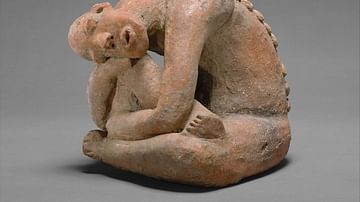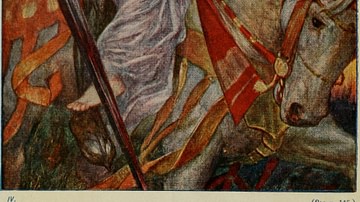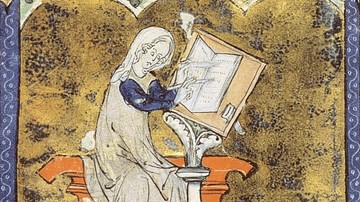Search Definitions
Browse Content (p. 147)

Definition
Grail Legend
The Grail Legend (also known as the Grail Quest, Quest for the Holy Grail) developed in Europe c. 1050-1485 CE. It most likely originated in Ireland as folklore before appearing in written form sometime before 1056 CE in The Prophetic Ecstasy...

Definition
Thomas Malory
Sir Thomas Malory (c. 1415-1471 CE) was an English knight during the War of the Roses (1455-1487 CE) best known for his highly influential work of medieval literature, Le Morte D'Arthur regarded as the first novel in English, the first in...

Definition
Djenne-Djenno
Djenne-Djenno (aka Djenné-Jeno, Jenne-Jeno, or Old Jenne) was an ancient city located in modern Mali, West Africa which flourished between c. 250 BCE - 1100 CE, making it one of the oldest cities in Sub-Saharan Africa. Prospering thanks to...

Definition
Bantu Migration
The Bantu migration from their origins in southern West Africa saw a gradual population movement sweep through the central, eastern, and southern parts of the continent starting in the mid-2nd millennium BCE and finally ending before 1500...

Definition
Guinevere
Guinevere is the Queen of Britain, wife of King Arthur, and lover of Sir Lancelot in the Arthurian Legends best known in their standardized form from Sir Thomas Malory's Le Morte D'Arthur (1469 CE). She first appears in Geoffrey of Monmouth's...

Definition
Kingdom of Abyssinia
The Kingdom of Abyssinia was founded in the 13th century CE and, transforming itself into the Ethiopian Empire via a series of military conquests, lasted until the 20th century CE. It was established by the kings of the Solomonid dynasty...

Definition
Chretien de Troyes
Chretien de Troyes (l. c. 1130-1190 CE) was the greatest romantic poet of his era, regarded today as the Father of Arthurian Romance (along with Geoffrey of Monmouth) and also Father of the Novel owing to his narrative form. He was most likely...

Definition
Faras Cathedral
The Cathedral of Faras, a city in ancient Nubia and once the capital of the Kingdom of Faras (aka Nobatia), was built and rebuilt from the 8th to 11th century CE. Its interior was decorated with hundreds of frescoes which are amongst the...

Definition
Marie de France
Marie de France (wrote c. 1160-1215 CE) was a multilingual poet and translator, the first female poet of France, and a highly influential literary voice of 12th-century CE Europe. She is credited with establishing the literary genre of chivalric...

Definition
Old Dongola
Old Dongola (aka Dungulah or Dunkula), located in modern Sudan, was the capital of the ancient Nubian kingdom of Dongola (aka Makuria or Makurra) which flourished from the 6th to 14th century CE. A Christian kingdom for at least 750 years...